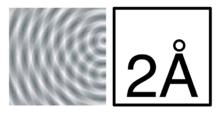Voting advice applications (VAAs) are very popular in Europe, offering citizens the chance to see how candidates for political office match or diverge from their own stances on policies and issues. But how to adapt these sophisticated web apps for developing democracies, where political literacy is low, partisan violence is high, and internet access is not a given? These were the challenges faced by my team at HIIT (with funding from Nokia).
Cross-cultural and political science considerations were key in this design process. I conducted an extensive literature review which showed me that matching algorithms, presenting partners, choice and presentation of questions and results greatly affected UI choices. My and my teammates’ ethnographic research made clear that masking social cues such as tribal affiliations of candidates was also key. From this research we constructed a framework of considerations for localizing VAA installations.
We began our direct research by gathering ethnographies, both existing (studies of social media use in developing countries) and our own structured interviews both local and remote, and formed user needs assessments and technology evaluations. We had to answer basic questions such as: how do people in Kenya get online – shared computers, libraries, cyber cafés, or something we hadn't expected?
Our research indicated that most likely or interested voters interacted with online news and social media via WEP-enabled mobile phones. This gave us our ceiling on design. But it raised more questions, such as what the fee structure was for internet access, and would users scroll through long blocks of text (vital for VAA questions)?
I and a teammate wrote a protocol for co-design sessions that took place under remote supervision at the University of Nairobi, Kenya. Giving potential voters in the target country agency allowed us great insights we might not have gotten from only external studies and theory. I then took their activities and codified them into user flows, which we reconciled into a single, improved user flow for our project. The paper prototype that I rapidly delivered helped us see through testing that users would scroll rather than load new screens.
The project laid the groundwork for both public and private organizations, giving them foundational research that served to bring this popular voting education tool to Kenya and other young democracies in Africa.



